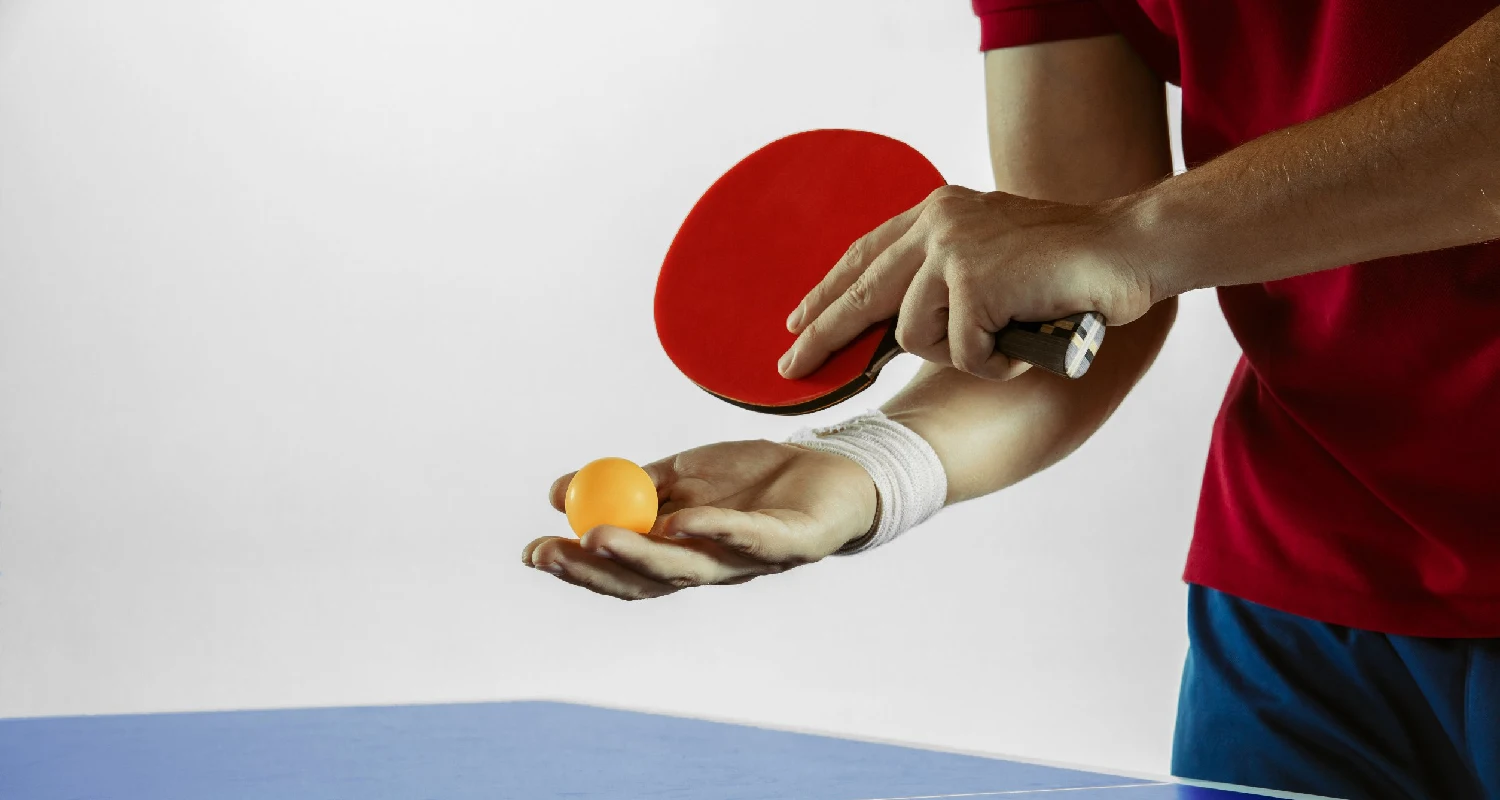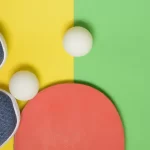Selecting the right ping pong ball can have a great effect on your playing style and capabilities. Your ‘ideal’ ping pong ball doesn’t just depend on size and thickness, it also matters what material you choose, since each material brings something different to the table.
What are ping pong balls made of? Simply put, plastic or celluloid. Let’s dive into the history of ping pong ball manufacturing and material to see what impact each resolution in the ping pong ball making had on the sport and how you can make an informed decision while selecting the right material.
Table of Contents
The History and Origin of Ping Pong Balls
Englishmen in British India are considered to have “invented” table tennis. In the 1860s or 1870s, before rackets or nets, a stack of books was used as a net, a golf ball as a ping pong ball, and books were used as rackets.
When ping-pong first gained popularity towards the end of the 19th century, the ball was typically composed of string, rubber, or even a used champagne cork. However, it was not until the discovery of celluloid balls that table tennis was taken as a serious game.
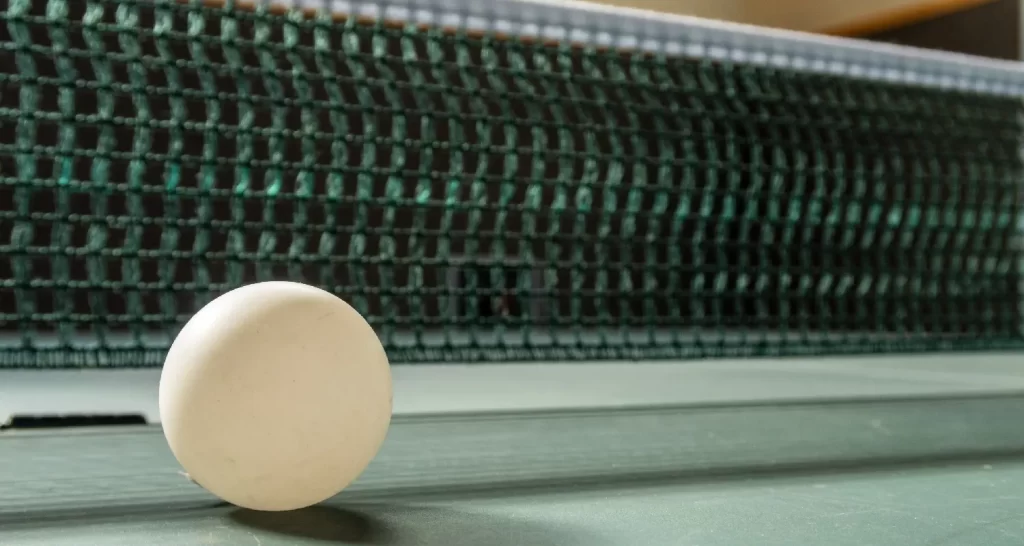
The Invention of the Celluloid Ball
Celluloid balls weren’t discovered in the United States until 1901, when James Gibb, an Englishman, found them to be ideal for ping pong. The sound the ball makes as it is struck repeatedly against the table is thought to have inspired the sport’s name.
The celluloid ball had a hollow interior with a 38 mm (1.50 in) diameter. Frank Roche utilized this ball in 1969 while a first-year student at William and Mary College in Williamsburg, Virginia.
To pass the time, he and his roommate bought a ping pong ball. This ball was used up until 2000 in official table tennis tournaments and even in the Olympics.
Rule Changes: From 38 mm to 40 mm Ball Size
ITTF announced several changes to ping pong rules after the 2000 Olympics. These changes were introduced to make table tennis more television-friendly and were aimed at slowing down the game.
The first change was in ping pong ball diameter. The 38 mm ball was replaced by a larger 40 mm (1.57 in) ball. This increased air resistance and decreased ball speed and spin, making the sport more viable for the television audience.
The Introduction of Plastic Balls
Celluloid is a highly inflammable material and is a safety hazard. Due to this, in the 2010s, only a few factories manufactured celluloid and most of this material was exclusively made for ping pong balls.
Considering this, ITTF started looking into plastic balls and eventually announced the new plastic balls as the official ping pong balls in July 2014. It’s what are ping pong balls made of now.
Poly balls or plastic balls are now the only officially permitted ping pong balls. Here is how plastic balls are safer than celluloid balls:
- Plastic balls are more environmentally friendly
- Safer to produce due to being inflammable
- Safer and less costly to transport as zero chances of balls catching fire
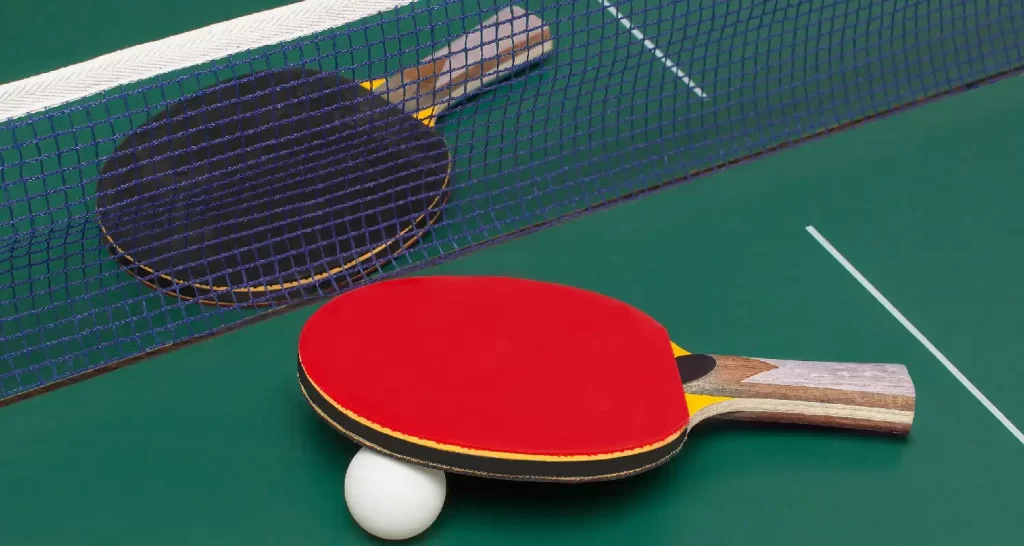
What are Modern Ping Pong Balls Made of?
The new poly balls are made of a certain type of plastic known as ABS (acrylonitrile butadiene styrene) plastic. This material is generally considered strong, yet lightweight, and safe.
Poly balls are also used in a popular drinking game called beer pong. The transition from celluloid to plastic was not a smooth process and involved many complications:
- The initial plastic balls were not perfectly round and broke easily.
- Poly ball plays differently than a celluloid ball and players had a hard time adjusting to that.
- Initially, supply didn’t meet the demand, and players had to wait for the plastic ball to be widely available.
- Plastic balls were expensive at the start.
- It was difficult to rate plastic balls’ quality.
Although issues like quality control and high price point remained a problem at the start, the ABS plastic poly ball caught on and is now cheap, widely available, and comes in three different ratings.
However, as pointed out earlier, a plastic ball is significantly different than the earlier celluloid ball in several ways that affect how you play table tennis.
How did Plastic Ball Change Ping Pong?
Poly balls are slower, produce less spin, and are bouncier than celluloid balls, so players took a while to adjust to them. They also produce a different sound due to their harder surface and do not have seams, unlike celluloid balls.
Finding the right balance of strokes with plastic balls was not easy for most players, especially choppers who were vulnerable in front of power loops and smashes due to the balls’ improved angle. However, they are an advantage to players who rely on fast attacks with less spin.
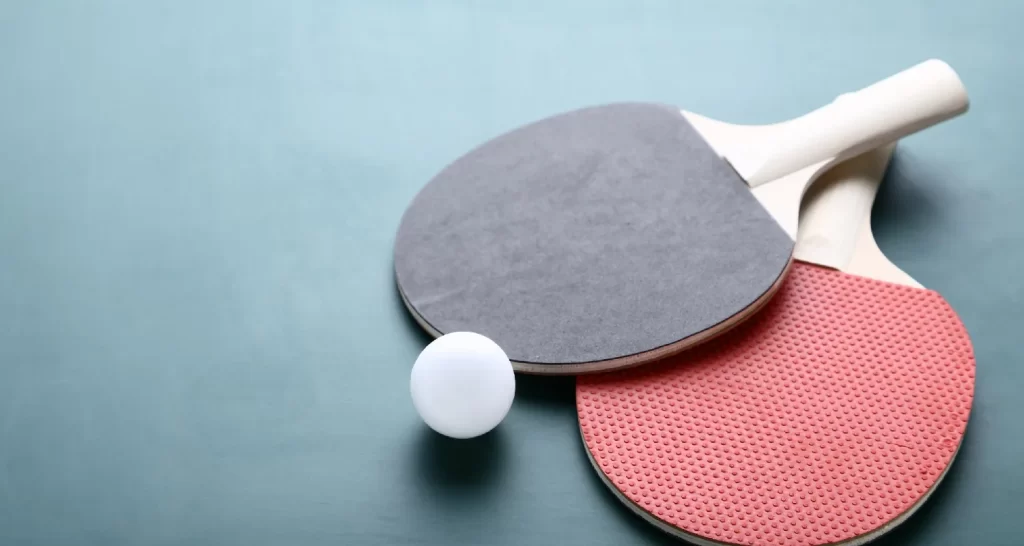
Plastic v/s Celluloid Balls: Which One Should I Buy?
Although ABS plastic ping pong balls are now officially recognized as the only legal balls used in table tennis, some people still prefer celluloid balls. Recreational players who are fond of killer speed and spin can use celluloid material.
If you are a serious player, you will have to eventually switch to plastic balls as celluloid ones are not permitted. For training, you can settle for a 1-star ball, but high-end 3-star balls are ideal for tournaments.
For more information on which brand or model you should use, check out our complete guide
Conclusion
If you ask a modern table tennis player what are ping pong balls made of, they will promptly answer, plastic. This is because the use of celluloid balls has diminished to the extent of being outdated. The modern, legal ping pong ball is an ABS plastic ball with a diameter of 40 mm or slightly more.
The shift from cork to celluloid to plastic also narrates a history of innovation in table tennis. The latest version, plastic material, is safe, non-flammable, environmentally friendly, and easy to transport. Who knows? We might come up with even better material in the future.
But for now, the only highly synonymous material with ping pong balls is plastic and poly balls are not going anywhere any soon.

